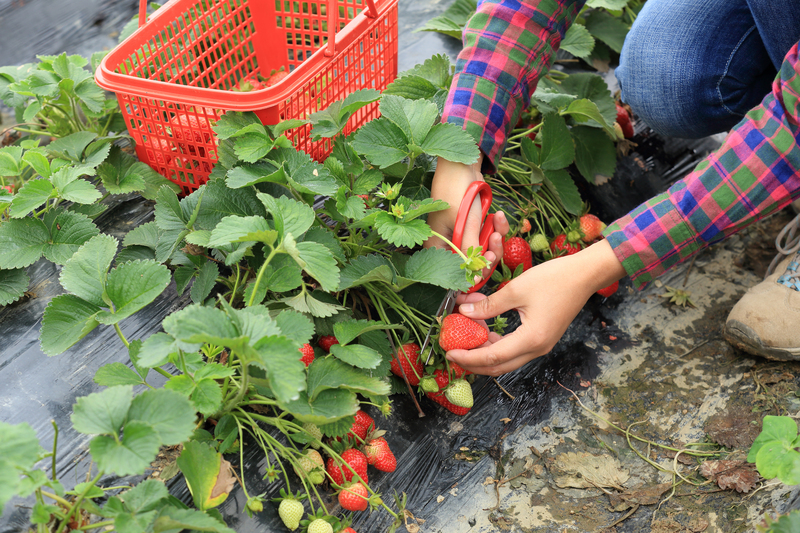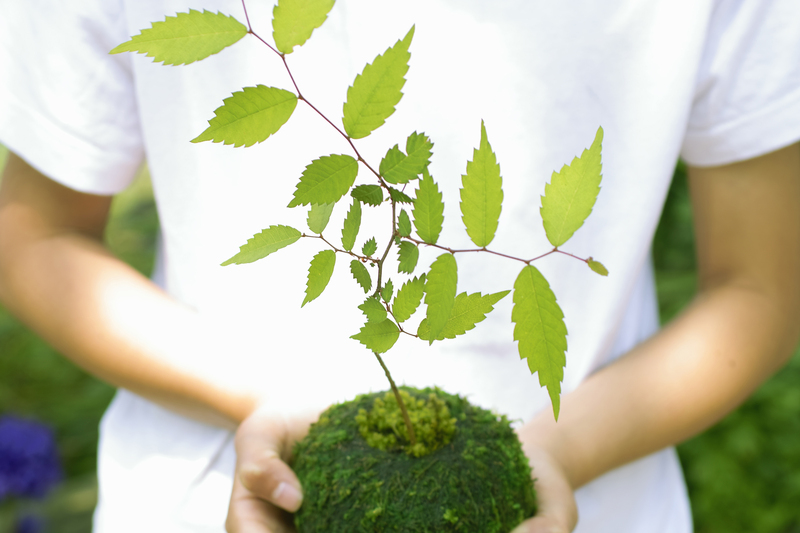Preventing Regrowth After Stump Removal the Right Way: A Comprehensive Guide
Removing a tree stump often feels like the last chapter in a tree removal project, but the story rarely ends there. Unchecked, stumps can become a source of persistent regrowth, drawing nutrients from the soil and giving rise to unwanted shoots that create additional yardwork and potential hazards. Preventing regrowth after stump removal the right way is crucial for homeowners and landscapers seeking a truly fresh start in the landscape.
This article explores effective, long-lasting methods to stop stumps from sprouting after removal. We'll delve into why regrowth happens, detail multiple prevention techniques, and provide actionable aftercare strategies to keep your yard free from returning trees. If you want to ensure your tree removal investment endures, this guide delivers the in-depth answers you need.

Why Do Stumps Regrow? Understanding the Problem
Most tree species possess an impressive ability to regenerate. When you cut down a tree, the root system remains alive and, in many cases, ready to produce fresh shoots (known as suckers). Preventing stump regrowth isn't just about removing what you see; it's about disrupting the biological mechanisms that drive sprouting.
Key factors contributing to stump regrowth include:
- Tree Species: Certain trees--like willow, poplar, maple, sweetgum, and elm--are notorious for vigorous regrowth from stumps and roots.
- The Age and Health of the Tree: Healthy, mature trees usually have robust systems to promote survival, making them more likely to regrow after cutting.
- Removal Technique: Cutting a tree flush with the ground still leaves roots and possibly the root collar intact, ready to fuel new shoots.
- Soil Moisture and Nutrients: Fertile, well-watered soils make it easier for stumps to regenerate foliage.
The Risks of Ignoring Stump Regrowth
- Unwanted Vegetation: Sprouts and suckers create unsightly growth that detracts from yard aesthetics.
- Pest Habitat: Rotting stumps and vigorously growing shoots attract insects such as termites or carpenter ants, and may harbor fungi or pests.
- Safety Hazards: Low sprouts are a tripping danger, while underground roots can interfere with mowing or landscaping equipment.
- Root Encroachment: Surviving roots may disrupt sidewalks, foundations, or underground utilities.
How to Prevent Tree Stump Regrowth the Right Way
There are several effective strategies to prevent regrowth after stump removal. The best approach often involves a combination of techniques, tailored to your specific tree species and landscape needs. Let's explore your options:
1. Stump Grinding: Mechanical Removal
Stump grinding is the preferred professional method for eliminating regrowth potential. A stump grinder shreds the stump and some surrounding roots into wood chips, removing the energy source for new sprouts.
- Process: The grinder chips the visible stump to 6-12 inches below ground level. Deeper grinding (even up to 18 inches) targets major roots.
- Benefits: Immediate reduction in regrowth risk; creates mulch for the site; leaves the area ready for replanting or landscaping.
- Extra tip: Rake up and remove any surviving root pieces after grinding to further discourage sprouts.
2. Chemical Control: Killing Root Systems and Stumps
Chemical stump killers are often used as a secondary step--either in conjunction with grinding or after basic cutting. These products contain active ingredients (such as glyphosate or triclopyr) that disrupt regrowth by poisoning the stump and roots.
- Application: Immediately after cutting, drill holes into the stump and apply chemical stump killer according to the manufacturer's instructions.
- Caution: Use chemicals sparingly, follow safety guidelines, and avoid contamination of nearby plants or water sources.
- Eco-tip: Seek out environmentally friendly options or use concentrated vinegar for smaller stumps as a less toxic alternative.
3. Solarization: Natural Stump Decomposition
If you avoid chemicals and heavy machinery, solarization offers an organic, low-effort solution.
- Method: After stump cutting, cover the area tightly with thick black plastic or tarps. Secure the edges with rocks or soil to trap heat and moisture.
- How it works: The heat accelerates decay and starves new shoots of sunlight, weakening the root system over time.
- Timeline: Effective solarization may take 2-6 months, depending on the size and type of the stump.
4. Epsom Salt or Rock Salt: Desiccation Technique
Epsom salt and, more rarely, rock salt are traditional, non-toxic remedies to dehydrate and kill stumps at their root.
- How to use: Drill several deep holes into the cut stump and fill with Epsom salt, then add water to help absorption. Cover the stump with a tarp to keep moisture in.
- Outcome: The salts draw out water from the stump tissues, gradually killing the ability to sprout.
- Note: Avoid excessive salt near prized plants to prevent soil damage.
5. Regular Sprout Removal: Persistence Pays Off
If regrowth does occur, frequent manual removal of new shoots can eventually exhaust a stump's energy reserves.
- Technique: Monitor the stump and surrounding soil closely for suckers. Clip or pull them as soon as they emerge--never let them leaf out.
- Why it works: Without leaves, the stump cannot photosynthesize, hastening its demise.
- Best for: Smaller stumps or less vigorous tree species.
6. Complete Stump and Root Excavation
Though labor-intensive, digging out the entire stump and main roots is the most guaranteed solution to prevent regrowth after stump removal.
- Process: Use shovels, axes, or specialized equipment to excavate both the stump and the larger lateral roots from the soil.
- Result: No remaining live wood means no chance of new sprouts.
- Downside: Large-scale excavation can be disruptive and may require machinery for big trees.
Aftercare: Ensuring Long-Term Success
Even after you've applied your chosen stump regrowth prevention method, post-removal care is critical. Here's how to secure your results:
- Inspect regularly for new sprouts within the first year, especially for species prone to suckering.
- Refill and level the ground after grinding or excavation to prevent low spots where shoots can hide.
- Improve soil health with compost and organic matter to support desirable landscape plants, which also help shade out opportunistic regrowth.
- Consider mulching: After removal, a thick layer of organic mulch deters light from reaching any lingering roots and discourages regrowth.
- Replant wisely: If you're putting a new tree in the same area, consult with an arborist to ensure stump and root decomposition is complete and pick a species less likely to sprout aggressively.
Frequently Asked Questions: Preventing Stump Regrowth
Do all stumps regrow?
No. Some conifers (like pine and spruce) rarely sprout from stumps, while many broadleaf species are far more persistent. Research your tree's species for its regrowth potential before deciding on a removal strategy.
How long can a stump keep trying to regrow?
Stump sprouting can be a multi-year process! Some stubborn species may produce shoots for 2-5 years after removal unless fully neutralized.
Can I use bleach to kill a stump?
Bleach is not recommended as a stump killer. It may harm the surrounding soil and landscape, and often does not fully resolve regrowth in hearty species. Reliable stump killers or Epsom salt are safer, more effective options.
Is professional stump removal worth the cost?
For large, established trees or species known for persistent regrowth, professional grinding or excavation typically provides the fastest, surest way to prevent stump regrowth for good.

Summary: Stopping Stump Regrowth Properly for a Cleaner Landscape
Preventing regrowth after stump removal is as vital as the initial tree removal itself for long-term landscape health and appearance. Here's a quick recap of expert-approved steps:
- Grind or excavate stumps and larger roots whenever possible.
- Apply a targeted chemical stump killer for tough species if mechanical removal isn't feasible.
- Solarization, Epsom salt, or repeated shoot removal work well for smaller stumps or when eco-friendliness is a priority.
- Monitor the area and perform periodic maintenance to nip any new growth in the bud--literally.
- Improve site conditions and replant with intention for a beautiful, sprout-free landscape.
For the best results, adapt your stump regrowth prevention method to your specific tree species, local climate, and long-term plans for the area. With the right technique and a little persistence, you'll enjoy a truly stump-free yard and peace of mind knowing the tree won't be back!
Further Resources
- ISA: Tree Owner Information
- University of Minnesota Extension: Preventing Sprouts after Tree Removal
- Arbor Day Foundation: Tree Facts
Invest the effort at the removal stage, and your outdoor sanctuary will remain serene and free from unwanted tree regrowth for years to come!